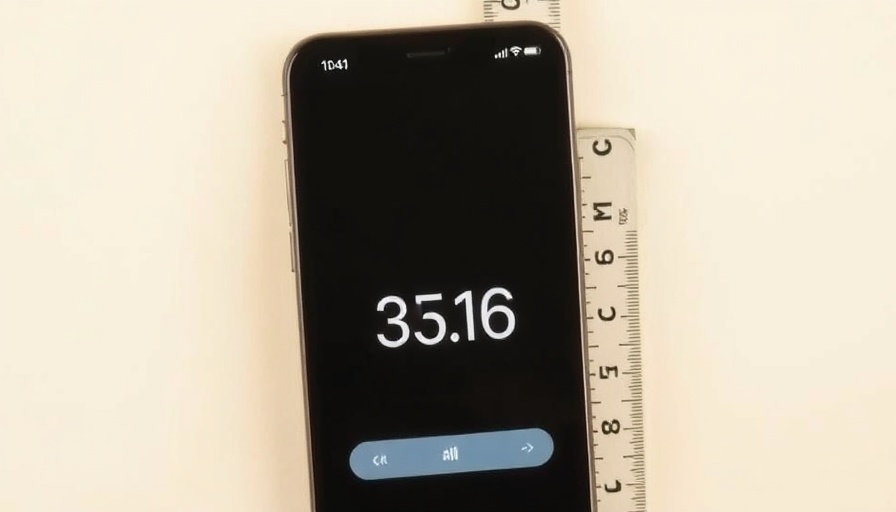
Don’t Let Common Homebuyer Mistakes Derail Your Dreams
Buying a home is a significant milestone, often recognized as the culmination of years of hard work and savings. However, this exciting venture can also bring along hidden pitfalls, especially for first-time buyers. Whether you’re ready to invest in your first property or simply contemplating the idea, understanding common mistakes and how to avoid them is crucial for making informed decisions.
1. The Perfect Home: A Myth to Avoid
Many first-time homebuyers find themselves waiting for the "unicorn house," the perfect match that checks every box. However, waiting for this elusive property can lead to missed opportunities as the market continues to change. This expectation can prolong your search and increase your stress, particularly as prices rise. Real estate expert Jon Wade suggests prioritizing essential criteria and being open to compromises. Instead of holding out for perfection, consider a potentially great house that could benefit from your personal touch through DIY home improvement projects.
2. Budgeting Beyond the Mortgage
When planning your home budget, it’s easy to fixate solely on the monthly mortgage payment. However, it’s equally important to account for additional costs like property taxes, insurance, and maintenance. Skipping these calculations can leave you financially exposed. Experts recommend gathering data on recent utility bills and routine maintenance costs to develop a comprehensive budget. By accounting for these DIY home maintenance and unexpected costs early on, you can mitigate stress in the future.
3. Neighborhood Matters: Culture Over Aesthetics
A beautiful house in an unsuitable neighborhood can quickly turn your dream home into a nightmare. Before making a purchase, invest time in the area: explore it during different times of the day, connect with locals, and assess if the environment fits your lifestyle. Prioritizing DIY home organization within an ideal neighborhood can help turn your new space into a sanctuary.
4. Working with Professionals: Your Safety Net
It might seem tempting to bypass a real estate agent to save money, but this decision can end up costing more in lost opportunities and peace of mind. A knowledgeable agent can offer insights into neighborhoods, negotiate better prices, and advise on potential issues. Their expertise helps you navigate the complexities of the process and can save you from costly mistakes down the line. Utilize their background to guide your DIY home renovation choices, ensuring the property matches your vision and standards.
5. Prioritize Inspections: Protect Your Investment
Forgetting to conduct a thorough home inspection can be one of the worst mistakes a buyer can make. Through my personal experience, I learned this the hard way—discovering the house I was interested in lacked a foundation was a major wake-up call. Inspections can uncover hidden issues that impact the long-term viability of your home. Don’t skip this critical step.
6. Avoid Believing Every Listing
Real estate listings often exaggerate the features of a property. To avoid disappointment, ensure you view homes in person rather than relying solely on online descriptions or photographs. Visit the property to analyze the space, condition, and overall environment, allowing for clearer expectations as you approach your home-buying journey.
7. Embrace Flexibility in Your Approach
Your journey to becoming a homeowner won’t mirror that of everyone you know. While it’s tempting to rush, embracing a flexible timeline can lead to a more robust offer and better overall satisfaction with your purchase. Explore alternative financing methods if traditional loans aren’t favorable for you, focusing on what feels right at the moment.
8. Engaging with Local Resources
Local resources can enhance your buying experience drastically. Schools, libraries, and consumer advocacy groups often host workshops that offer valuable insight into the home-buying process. Tap into these resources to brush up on DIY home design or DIY home decor ideas that will further elevate your living space.
9. Understand Market Timings
Timing is essential in real estate. Familiarize yourself with market trends and current economic climate indicators that may influence your purchasing power. Making an upward adjustment in your budget may be necessary as market conditions fluctuate. Stay informed to ensure you can capitalize on favorable situations.
10. Logistics of Moving: Plan Like a Pro
Finally, don’t underestimate the logistical challenges of moving. Preparing a detailed action plan that encompasses everything from packing to changes in your original address can streamline what is often a chaotic process. Consider utilizing DIY home organization tips to simplify and manage your move effectively.
Embarking on the journey of homeownership can be one of the most rewarding experiences of your life. By avoiding common pitfalls and approaching the process informed and prepared, you’ll maximize your first home purchase. Make sure to keep these tips in mind and embrace the excitement of turning a house into your unique home.
 Add Row
Add Row  Add
Add 




Write A Comment